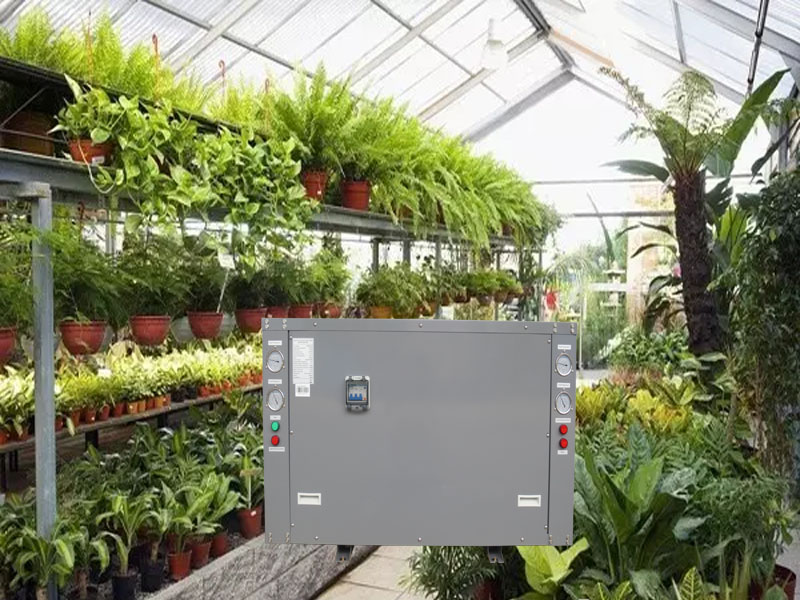
In addition, we can analyze the feasibility of applying heat pump technology to greenhouse from the technical aspect.
1. The temperature demand range of most greenhouses is within 30 ℃. Whether fuel oil or electric heating system is used, the temperature obtained is far higher than this temperature range, which increases the temperature loss invisibly. The heating temperature of the heat pump air-conditioning system is 45 ℃ ~ 55 ℃, which belongs to low-temperature heating, with small temperature difference and small loss, avoiding the waste of energy.
2. The heating energy efficiency ratio of the heat pump system is as high as 4.0, which means that we can get 4kw or more heat energy by using 1kW electric energy and through heat pump conversion. It greatly exceeds the energy efficiency of 1.0 for electric heating system, let alone less than 1.0 for fuel. It can be seen that the operation cost in the later stage is greatly reduced.
3. The heat pump system, especially the water ground source heat pump system, greatly reduces the occupation of the site, and the system really achieves zero emissions. It not only reduces the occupation of arable land, but also greatly reduces the environmental pollution.
investment analysis
It is calculated according to the greenhouse area of 1000 ㎡ and the greenhouse temperature of vegetables (8-15 ℃ in winter). The heat supply capacity of heat pump is 60kW, and the investment is about 250000.
For example, if electric heating is used, the comprehensive cost will be reduced by about 30%; if coal-fired and oil fired boilers are used, the comprehensive cost will be reduced by about 20%.
To sum up, as a low-temperature heating form, heat pump has gradually replaced the conventional air conditioning form in various buildings. Greenhouse technology also plays an important role in the construction of new countryside. The use of heat pump technology, to solve the greenhouse temperature demand, reduce pollution, service life is far longer than electric heating and oil fired boiler form. Operating costs have been reduced by more than 70%. It is worth popularizing in greenhouse construction.

